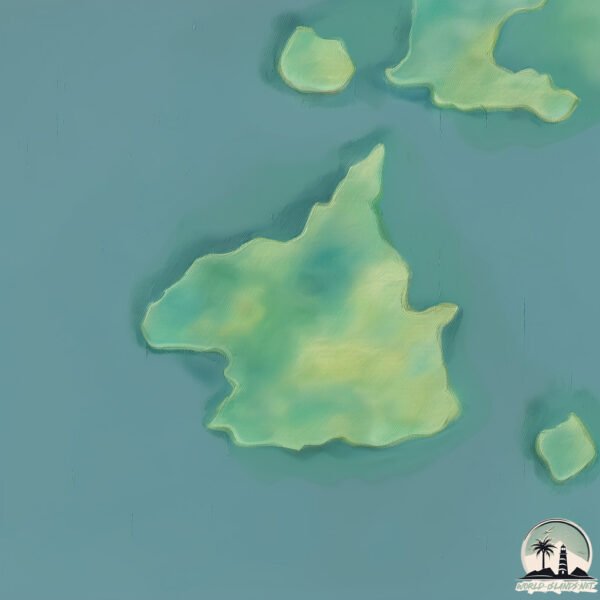Welcome to Taehwa-do , a Continental island in the Yellow Sea, part of the majestic Pacific Ocean. This guide offers a comprehensive overview of what makes Taehwa-do unique – from its geography and climate to its population, infrastructure, and beyond. Dive into the details:
Geography and size of Taehwa-do
Size: 4.733 km²Coastline: 11.8 kmOcean: Pacific OceanSea: Yellow SeaContinent: Asia
Taehwa-do is a Small Island spanning 4.7 km² with a coastline of 11.8 km.
Archipel: –
Tectonic Plate: Eurasia – One of the world’s largest tectonic plates, the Eurasian Plate covers a significant portion of Europe and Asia. It’s characterized by diverse geological features, including the Ural Mountains, the European Plain, and the Himalayas formed from its collision with the Indian Plate.
The geographic heart of the island is pinpointed at these coordinates:
Climate and weather of Taehwa-do
Climate Zone: ContinentalClimate Details: Monsoon-Influenced Hot-Summer Humid Continental ClimateTemperature: Hot Summer
Climate Characteristics: Hot summers with monsoon rains, contrasting with dry, cold winters. Typical of east Asian continental edges.
Topography and nature of Taehwa-do
Timezone: UTC+09:00Timezone places: Asia/TokyoMax. Elevation: 157 m Mean Elevation: 106 mVegetation: Deciduous Broadleaf ForestTree Coverage: 83%
The mean elevation is 106 m. The highest elevation on the island reaches approximately 157 meters above sea level. The island is characterized by Plains: Flat, low-lying lands characterized by a maximum elevation of up to 200 meters. On islands, plains are typically coastal lowlands or central flat areas.
Dominating Vegetation: Deciduous Broadleaf Forest
Vegetation: 4 vegetation zones – Diverse Island
Infrastructure and Travelling to Taehwa-do
Does the island have a public airport? no .
Does the island have a major port? no .
The mean population of Taehwa-do is 200 per km². Taehwa-do is Moderately Inhabited. The island belongs to North Korea .
Continuing your journey, Ka-do is the next notable island, situated merely km away.
美军绝非纸老虎,朝战战例:51年美机大和岛围歼共机8架, 附美机53年停战日当天打爆米格共机的实战影片
朝鲜战争#抗美援朝#中美冲突被愚民洗脑教育的墙内老少粉红们,做梦也想不到“志愿军空军”被美机打爆坠海的狼狈不堪。
美军绝非纸老虎,朝战战例:51年美机大和岛围歼共机8架, 附美机53年停战日当天打爆米格共机的实战影片
朝鲜战争#抗美援朝#中美冲突被愚民洗脑教育的墙内老少粉红们,做梦也想不到“志愿军空军”被美机打爆坠海的狼狈不堪。
朝鲜战争#抗美援朝#中美冲突被愚民洗脑教育的墙内老少粉红们,做梦也想不到“志愿军空军”被美机打爆坠海的狼狈不堪。
MBC 푹쉬면 다행이야 섬이름 대화도 MBC I'm glad you have a good rest The island's name is Daehwado | I Love @mbc
MBC 푹쉬면 다행이야를 제일 좋아하는 관객으로써 mbc 드라마도 함께하십시오... 섬이름은 대화도 입니다 #youtube ...
MBC 푹쉬면 다행이야를 제일 좋아하는 관객으로써 mbc 드라마도 함께하십시오... 섬이름은 대화도 입니다 #youtube #youtubeshorts ...
志愿军空军战力有多强?轰炸大和岛,让美国空军一夜跌落神坛
志愿军空军战力有多强?轰炸大和岛,让美国空军一夜跌落神坛.
志愿军空军战力有多强?轰炸大和岛,让美国空军一夜跌落神坛.
North Korea is classified as Least developed region: Countries that exhibit the lowest indicators of socioeconomic development, with the lowest Human Development Index ratings. The level of income is Low income.
News – Latest Updates and Headlines from Taehwa-do
Stay informed with the most recent news and important headlines from Taehwa-do. Here’s a roundup of the latest developments.
Loading...
Please note: The data used here has been primarily extracted from satellite readings. Deviations from exact values may occur, particularly regarding the height of elevations and population density. Land area and coastline measurements refer to average values at mean high tide.

